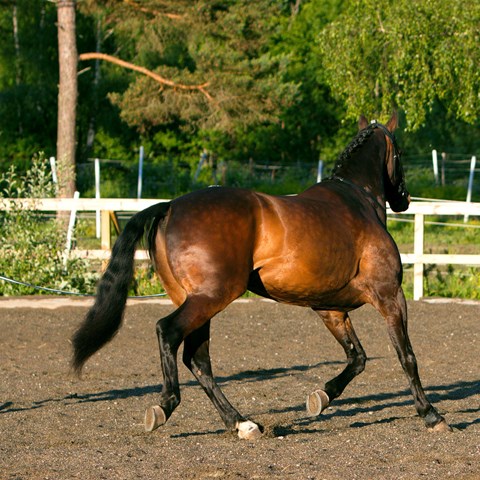Contact
Marie Rhodin
Researcher, Senior Lecturer at the Department of Anatomy, Physiology and Biochemistry (AFB)
Telephone: 018-672194
E-mail: marie.rhodin@slu.se

Lungeing is often part of the clinical lameness examination. The difference in movement symmetry, which is a commonly employed lameness measure, has, however, not been quantified between surfaces. The objective of this study was therefore to compare head and pelvic movement symmetry between hard and sodt surfaces and reins during lungeing using quantitative gait analysis in 23 horses considered sound by their owners.
While more symmetrical horses showed a consistent amount of movement symmetry across surfaces/reins, horses objectively quantified as lame on the straight showed decreased movement symmetry during lungeing, in particular with the lame limb on the inside of a hard circle.
The variation within group questions straight‐line movement symmetry as a sole measure of lameness without quantification of movement symmetry on the lunge, ideally on hard and soft surfaces to evaluate differences between reins and surfaces. In future, thresholds for lungeing need to be determined using simultaneous visual and objective assessment.
This study was made possible through a joint research collaboration with the Royal Veterinary College in England.
http://onlinelibrary.wiley.com/doi/10.1111/evj.12374/ep
Pfau T., Jennings,C., Mitchell H., Olsen E., Walker A., Egenvall A., Tröster S., Weller R., Rhodin M. (2014) Movement symmetry during lungeing in trot on hard and soft surface differs between sound and mildly forelimb lame horses. Equine Vet. J. doi: 10.1111/evj.12374
Marie Rhodin
Researcher, Senior Lecturer at the Department of Anatomy, Physiology and Biochemistry (AFB)
Telephone: 018-672194
E-mail: marie.rhodin@slu.se